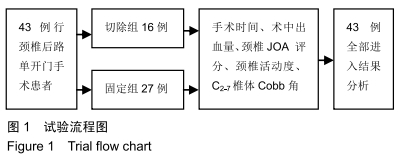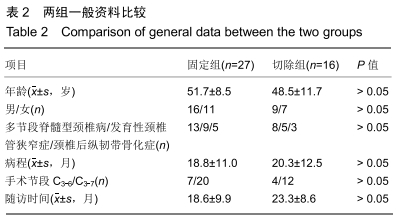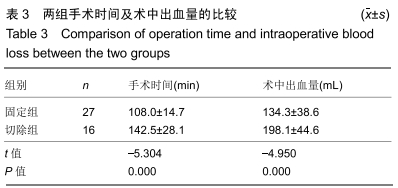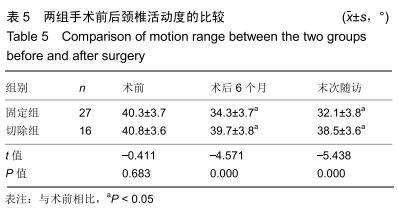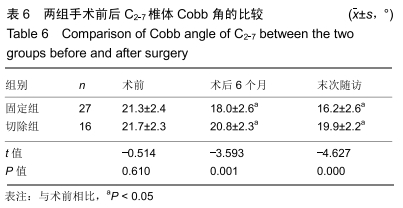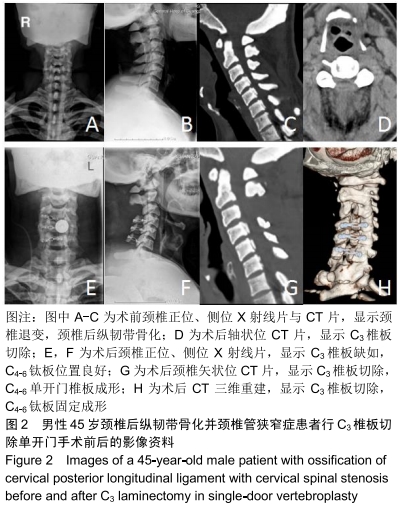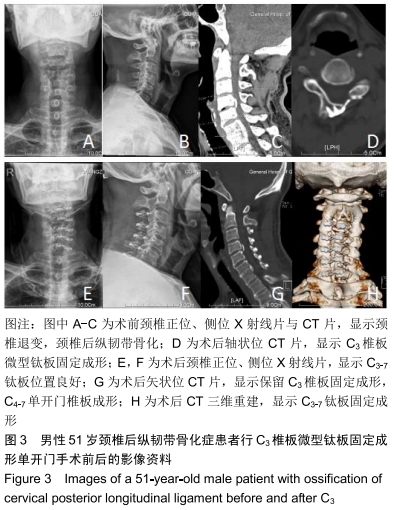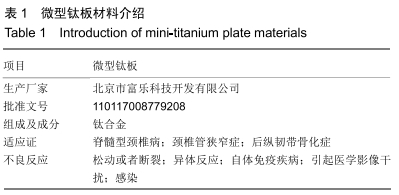中国组织工程研究 ›› 2020, Vol. 24 ›› Issue (12): 1805-1809.doi: 10.3969/j.issn.2095-4344.2542
• 脊柱植入物 spinal implant • 下一篇
C3椎板切除与微型钛板固定成形颈椎后路单开门术后颈椎活动度及曲度的比较
陈育岳,邹小宝,马向阳,王宾宾,杨浩志,葛 苏,张 双,倪 菱,夏 虹,吴增晖
- 中国人民解放军南部战区总医院骨科,广东省广州市 510010
Comparison of cervical motion range and curvature after C3 laminectomy and mini-titanium plate fixation after single-door vertebroplasty
Chen Yuyue, Zou Xiaobao, Ma Xiangyang, Wang Binbin, Yang Haozhi, Ge Su, Zhang Shuang, Ni Ling, Xia Hong, Wu Zenghui
- Department of Orthopedics, General Hospital of Southern Theater Command of PLA, Guangzhou 510010, Guangdong Province, China
摘要:
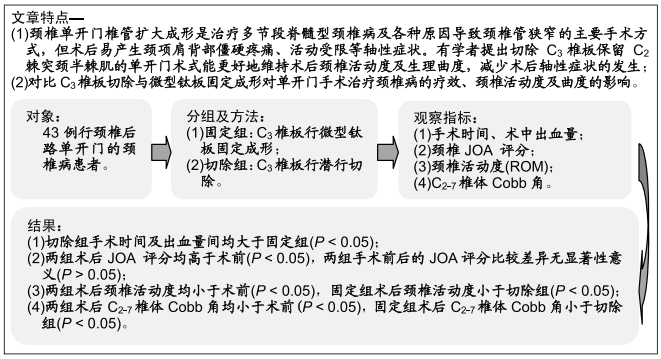
文题释义:
后路单开门手术:该术式可扩大颈椎椎管,使得颈脊髓向后方漂移,从而解除脊髓压迫,缓解神经功能障碍症状,是治疗多节段脊髓型颈椎病、发育性颈椎管狭窄、后纵韧带骨化等疾病的最常用手术方式。
轴性症状:这一概念是1999年由Kawaguchi提出,主要出现在颈椎椎板成形术后,由于颈椎后伸机理的损伤,颈椎矢状序列常不能有效维持,颈椎前凸减少,颈后肌群需通过持续收缩和缩短的作用力臂维持头颅的正常位置,最终将发生疲劳、疼痛并进一步加重力学失衡,引起颈项部疼痛、僵硬等轴性症状。
背景:颈椎后路单开门术后患者常出现轴性症状,有研究提出切除C3椎板保留C2棘突颈半棘肌的改良术式可减少术后轴性症状的发生。
目的:对比C3椎板切除与微型钛板固定成形对颈椎后路单开门术后患者临床疗效、颈椎活动度及曲度的影响。
方法:选择2012年6月至 2017年6月中国人民解放军南部战区总医院收治的颈椎病患者43例,其中男25例,女18例,其中27例行C3-6或C3-7颈椎后路单开门微型钛板固定椎板成形,设为固定组;另16例切除C3椎板后行C4-6或C4-7颈椎后路单开门微型钛板固定椎板成形,设为切除组。术前、术后6个月及末次随访时,对比两组神经功能JOA评分、颈椎活动度、颈椎C2-7椎体Cobb角。试验已获得中国人民解放军南部战区总医院伦理委员会批准。
结果与结论:①43例患者均成功完成手术,术中无血管及脊髓神经损伤;②两组术后6个月与末次随访的JOA 评分均高于术前(P < 0.05),两组手术前后的JOA 评分比较差异均无显著性意义(P > 0.05);③两组术后6个月与末次随访的颈椎活动度均小于术前(P < 0.05),固定组术后6个月与末次随访的颈椎活动度小于切除组(P < 0.05);④两组术后6个月与末次随访的C2-7椎体Cobb角均小于术前(P < 0.05),固定组术后6个月与末次随访的C2-7椎体Cobb角小于切除组(P < 0.05);⑤两组均未出现植入物过敏、排异、及免疫反应;⑥结果表明,C3椎板切除与微型钛板固定成形对单开门术后患者具有同样改善神经功能的疗效,但切除C3椎板可更有效防止术后颈椎活动度及曲度的减小。
ORCID: 0000-0002-182-0745(陈育岳)
中国组织工程研究杂志出版内容重点:人工关节;骨植入物;脊柱;骨折;内固定;数字化骨科;组织工程中图分类号:
